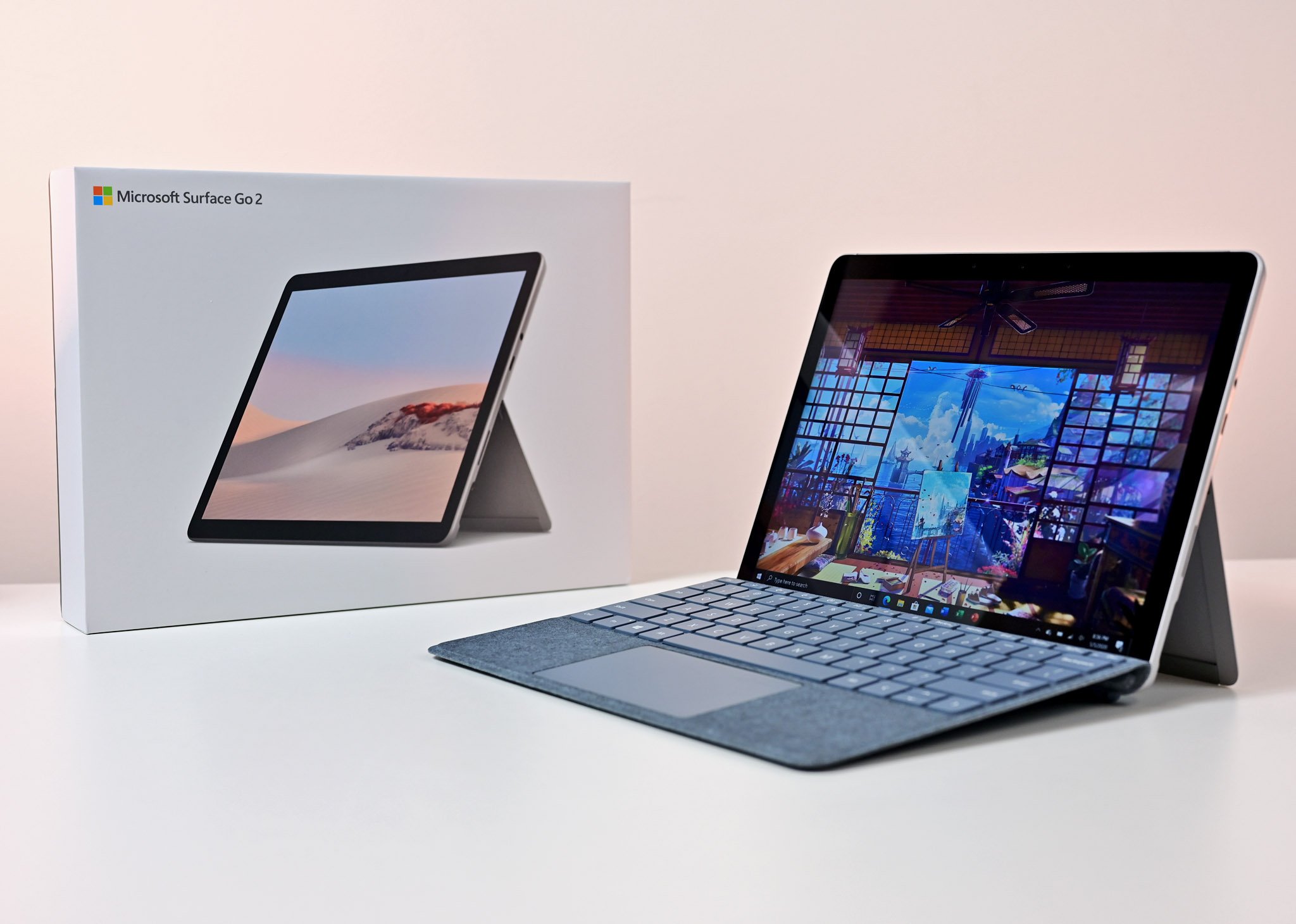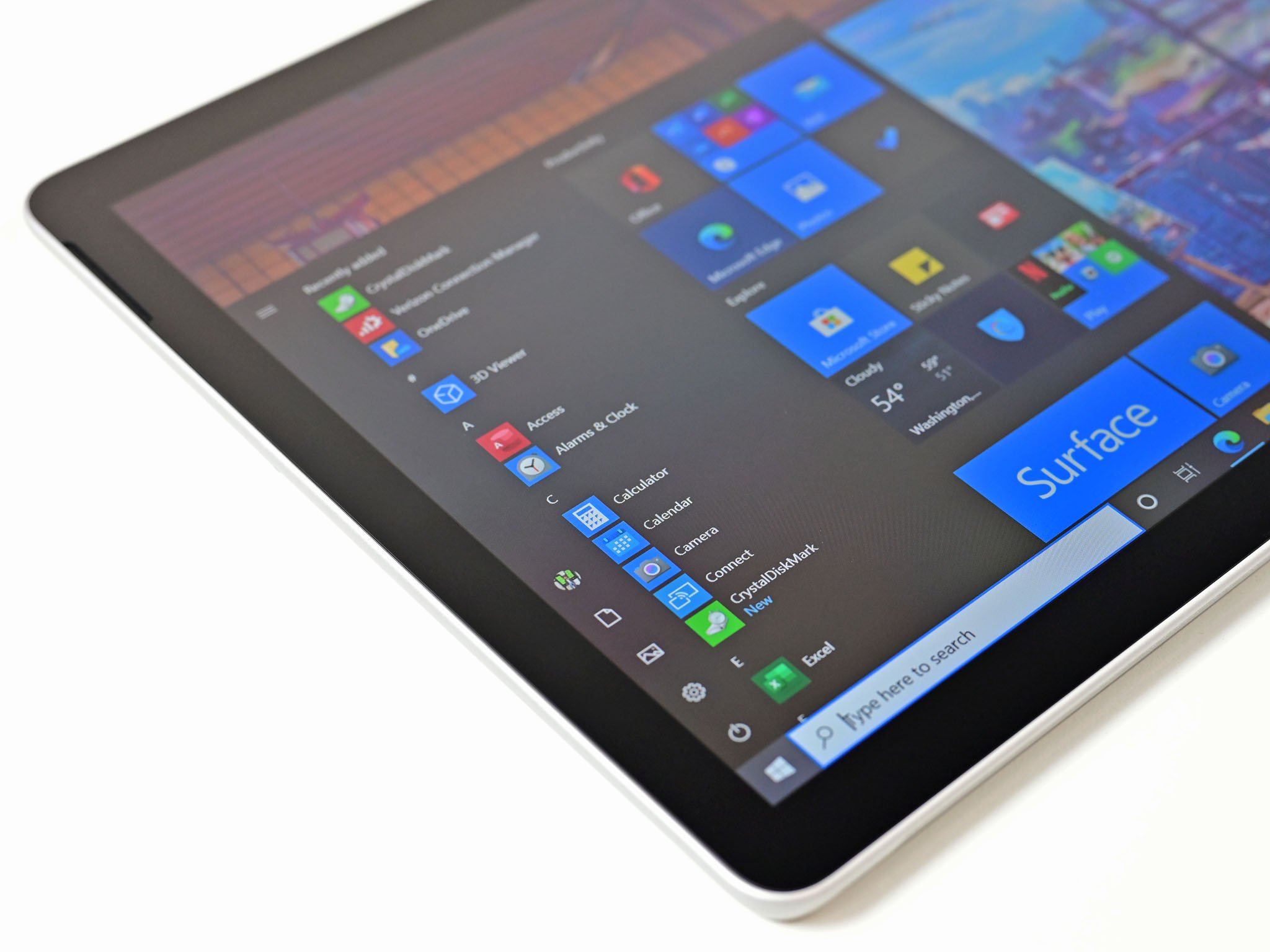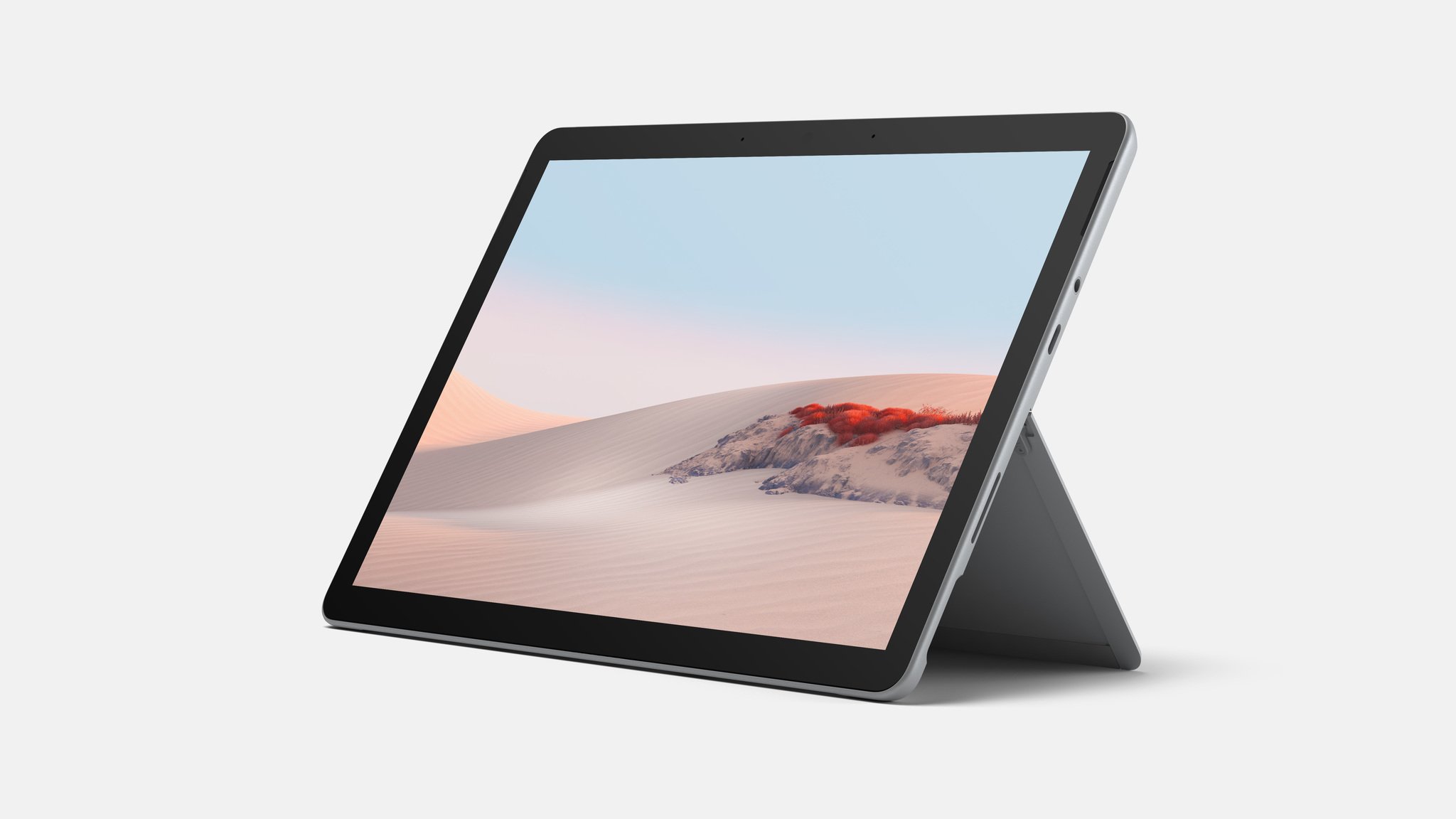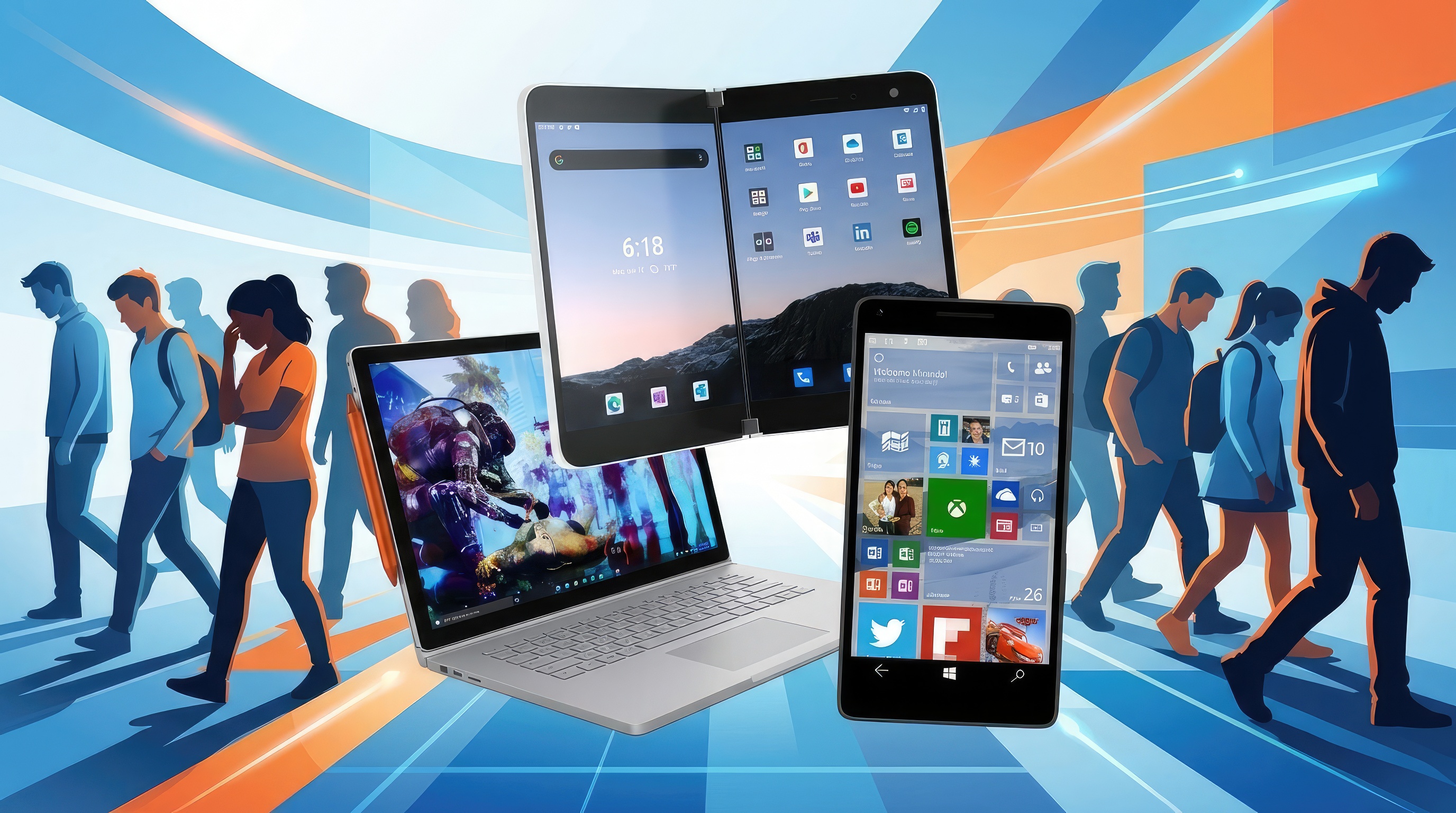Microsoft's new Surface Go 2 gets bigger display, more power
A nice update for Microsoft's Surface Go product line.

What you need to know
- Larger 10.5-inch display with thinner bezels.
- More powerful Intel Core m3 option.
- Longer battery, dual studio mics, and a better front camera.
- Launches May 12 starting at $399.
Microsoft has unveiled the next version of its popular Surface Go product line, featuring a larger 10.5-inch display and a more powerful Intel Core m3 option for customers who need it. The Surface Go 2, as it is officially known, still starts at its hallmark price of $399 and is compatible with previous generation accessories, as the overall size and design of the product is identical to the original Surface Go.
Bigger display and more power
Surface Go 2: What's new for 2020
The biggest change with Surface Go 2 is the larger 10.5-inch display with thinner bezels. One of the original Surface Go's biggest complaints from users was that the bezels were too big. Microsoft listened, and slimmed the bezels down with the second generation by increasing the size and resolution of the display. The bezels are not the slimmest out there, but it is a massive improvement over what we had before.
On the inside, the entry-level $399 model ships with 4GB RAM, 64GB eMMC storage and an Intel Pentium GOLD 4425Y which should offer modest performance for light work tasks such as checking email, writing a document in Office, and browsing the web. The higher-tier option will pack 8GB RAM, 128GB SSD storage, and a 64 percent more powerful Intel Core m3 processor which should be good for most work-related tasks and multitasking.
Indeed, our initial benchmarks reveal quite a leap in performance with the Core m3 processor over the Pentium Gold.
| Category | Surface Go 2 |
|---|---|
| Operating System | Windows 10 Home in S mode |
| Display | 10.5 inches, 3:2 aspect ratio, 1920x1280 (220 ppi) resolution, PixelSense |
| Processor | Intel Pentium GOLD 4425Y Intel Core m3-8100Y |
| Graphics | Intel UHD Graphics 615 |
| Memory | 4GB 8GB |
| Storage | 64GB eMMC 128GB SSD 256GB SSD (commercial) |
| Expandable Storage | microSD |
| Rear Camera | 8MP |
| Front Camera | 5MP |
| Security | Windows Hello face sign-in |
| Connectivity | Wi-Fi IEEE 802.11 a/b/g/n/ac/ax compatible, Bluetooth Wireless 5.0 LTE Advanced Qualcomm Snapdragon X16 LTE Modem |
| Ports | 1x USB-C, 1x Surface Connect, microSDXC card reader, 3.5mm headphone jack |
| Audio | 2W stereo speakers with Dolby Audio Premium |
| Battery | Up to 10 hours |
| Dimensions | 9.65 inches x 6.9 inches x 0.33 inches (245mm x 175mm x 8.3mm) |
| Weight | Wi-Fi: 1.2lbs (544g) LTE: 1.22lbs (553g) |
| Colors | Platinum |
Other notable improvements with the Surface Go 2 include an updated 5MP front-facing camera for video conferencing, improved battery life with a physically larger battery on the inside, and the inclusion of Microsoft's dual "Studio Mics" for better audio clarify when on a call. Microsoft is touting about 10 hours of battery life with the Surface Go 2, but real-life results will likely be somewhat less than that.
As with the last Surface Go, the new Surface Go 2 also has an optional LTE model for those who need to be always connected. It also supports Wi-Fi 6 technology for faster data speeds, and once again ships with Windows 10 Home with S mode enabled by default. Users can turn off S mode with the click of a button if needed.
All the latest news, reviews, and guides for Windows and Xbox diehards.
Surface Go 2: Pricing and availability

The Surface Go 2 is an overall modest update for the Surface Go line, but one that I think makes the Surface Go 2 one of Microsoft's best Surface products. The larger 10.5-inch display and more powerful processor should make the Surface Go a viable PC replacement for many people. The last Surface Go was recommended as a companion PC for your main computer, but the Surface Go 2 comes across as a device that many people might be happy with using as their only PC.
Surface Go 2 launches on May 12 in the following markets:
- United States
- Canada
- Australia
- New Zealand
- Germany
- Austria
- UK
- Ireland
- France
- Switzerland
- Belgium
- Netherlands
- Denmark
- Finland
- Norway
- Sweden
- Italy
- Spain
- Portugal
- Poland
- Japan
Surface Go 2 will also be launching in several more markets in the coming weeks, starting with China on June 2. On June 18, Surface Go 2 will launch in Taiwan, Hong Kong, Thailand, Malaysia, and Singapore, before also launching in Bahrain, Oman, Kuwait, Qatar, UAE, Saudi Arabia, and India on July 14. Microsoft will also be launching Surface Go 2 in Mexico and South Africa, new markets for Surface, on August 25.
Pricing is interesting, as there are more configurations for consumers at different price points this year. You can get 8GB RAM and 128GB storage with either the Intel Pentium GOLD or Intel Core m3 processor, giving you the option to save a few bucks if you don't need the more powerful chip.
Surface Go 2 Consumer
| SKU | Price |
|---|---|
| Intel Pentium GOLD 4425Y, 4GB RAM, 64GB eMMC | $399 |
| Intel Pentium GOLD 4425Y, 8GB RAM, 128GB SSD | $549 |
| Intel Core m3-8100Y, 8GB RAM, 128GB SSD | $629 |
| Intel Core m3-8100Y, 8GB RAM, 128GB SSD, LTE | $729 |
Surface Go 2 Commercial
Commercial customers have even more configurations to choose from, such as a Core m3 model with just 4GB RAM and 64GB storage. Commercial SKUs also come with Windows 10 Pro instead of Windows 10 Home in S mode:
| SKU | Price |
|---|---|
| Intel Pentium GOLD 4425Y, 4GB RAM, 64GB eMMC | $449 |
| Intel Core m3-8100Y, 4GB RAM, 64GB eMMC | $499 |
| Intel Core m3-8100Y, 8GB RAM, 128GB SSD | $679 |
| Intel Core m3-8100Y, 8GB RAM, 128GB SSD, LTE | $779 |
| Intel Core m3-8100Y, 8GB RAM, 256GB SSD, LTE | $879 |



